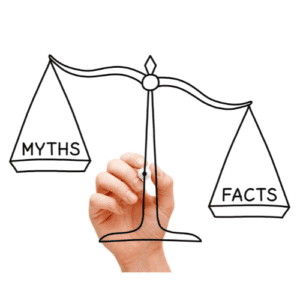Human trafficking, also known as Modern Day Slavery, is a tragedy. It continues to plague men, women and children across the globe. The heartbreaking human trafficking statistics show many are robbed of their freedom and human dignity. According to the International Labor Organization, an estimated 28 million people worldwide are in forced trafficking, with 17.3 million in labor trafficking and 6.3 million in sex trafficking. Of that, 4.9 million are women and children. These estimations are only the best reflection of trafficking reports. Estimations will always be lower than the actual numbers worldwide. While these human trafficking statistics are staggering, we can’t look away.
The UN defines Human Trafficking as the recruitment, transportation, transfer, harboring or receipt of people through force, fraud or deception, with the aim of exploiting them for profit. Human trafficking is usually divided into three broad categories: sex trafficking, labor trafficking and organ trafficking. In the U.S., there are currently 25 identified areas of trafficking under the umbrella of sex/labor trafficking.
To understand human trafficking statistics and how to be an advocate against it, we must break down some myths surrounding trafficking.
Trafficking is sometimes confused with another crime – human smuggling. A person does not need to be moved from one location, across states or across borders to be trafficked. A victim can be trafficked from their home.
Recent studies throughout the past several years have helped us understand how adaptive trafficking is.

Specifically, during the times of isolation and Covid lockdowns, recruitment for trafficking drastically changed. Platforms like Facebook saw a 125% increase in online recruitment. Now a victim’s very own bedroom is the doorway into trafficking.
This is widely and sadly untrue. Studies on the statistics of human trafficking have not only shown us the closeness of trafficking but the personal relationship between the victim and the trafficker. In 2020, it was noted most victims were recruited by their family members, including parents and, or romantic/ intimate partners. To date, it is understood that most victims not only know but, to most degrees, trust their trafficker or recruiters.
Familial trafficking worldwide accounts for most child trafficking across sex and labor abuses. This is partly because of cultural normalizations of exchanging family members for goods, food, rent, money or community status. This is exceptionally high in countries where children are used as a labor force. Sex trafficking typically involves much grooming and has high familial recruitment. Recent studies show familial recruitment, across all forms of trafficking, has increased at the alarming rate of 47% since 2019.
Many still believe the reality of trafficking is seen in Hollywood movies like Taken, where young women are kidnapped, drugged and physically held against their will. While this is possible, it is not the norm or reality for most. Traffickers will use multiple tactics of force, fraud or coercion to hold their victims captive. In addition to other tactics to maintain control over their lives. Various forms of psychological threats or coercion, such as isolation, intimidation, gaslighting, tricking, and, or manipulation, are some of the most common and most difficult means for a victim to escape because these are extremely heavy and invisible chains.

Trafficking is everywhere, in every state and neighborhood, and under our noses. Trafficking is insidious. It exists hidden in plain sight all around us! Its dark nature takes hold of vulnerable individuals in our communities, schools, places of employment and social circles. While there is no one face of trafficking and no one circumstance that is the pointed cause, in our ever-changing world, through pandemics, global wars, economic instabilities and injustices, vulnerabilities have been consistent through the years for sex and labor trafficking. Risk factors for sex and labor trafficking include substance use, runaway/homeless youth, mental health concerns, unstable housing, criminal record/history, and self-reported economic hardships.
National and International organizations like Polaris, International Justice Mission, A21, Operation Underground Railroad, and Shared Hope have educational resources and speakers to help recognize and teach about human trafficking statistics. Sharing this education at our churches, schools and places of employment is vital to fighting trafficking as a community.

The National Human trafficking hotline has a referral directory in which you can input your zip code and find anti-trafficking organizations in your community to serve by offering your time and resources.
Vulnerabilities are target signs for traffickers. When our youth understand these vulnerabilities and can address challenging situations safely, we can affect the relationships they allow in their lives.
If you suspect a friend or family member may be in an unsafe or potential trafficking situation, call the National Human Trafficking Hotline at 1-888-373-7888. Remember, confrontation is never the key, but offering a solution can be. If you share resources with a loved one in a caring way, they can decide when to reach out.
Our God is greater than the evils of trafficking, and He breaks our hearts for what breaks His. As we partner with Him in prayer and service, He can use our willing hands and feet to advocate against the atrocities of human trafficking.
Additional Information:
The post Heartbreaking Human Trafficking Statistics appeared first on Focus on the Family.
Continue reading...
The UN defines Human Trafficking as the recruitment, transportation, transfer, harboring or receipt of people through force, fraud or deception, with the aim of exploiting them for profit. Human trafficking is usually divided into three broad categories: sex trafficking, labor trafficking and organ trafficking. In the U.S., there are currently 25 identified areas of trafficking under the umbrella of sex/labor trafficking.
To understand human trafficking statistics and how to be an advocate against it, we must break down some myths surrounding trafficking.
Myth #1
Human Trafficking Involves Movement or Transportation of a Person
Trafficking is sometimes confused with another crime – human smuggling. A person does not need to be moved from one location, across states or across borders to be trafficked. A victim can be trafficked from their home.
How Can This Be?
Recent studies throughout the past several years have helped us understand how adaptive trafficking is.

Specifically, during the times of isolation and Covid lockdowns, recruitment for trafficking drastically changed. Platforms like Facebook saw a 125% increase in online recruitment. Now a victim’s very own bedroom is the doorway into trafficking.
“The internet has dramatically reshaped how we buy and sell everything – including each other. Social media has been used by traffickers to recruit victims, to proliferate their trafficking operations, and to control victims through restricting their social media access, impersonating the victim, or spreading lies and rumors online”.
Polaris project- Human trafficking and Social Media
Myth #2
Traffickers are Usually Strangers and Kidnappers
This is widely and sadly untrue. Studies on the statistics of human trafficking have not only shown us the closeness of trafficking but the personal relationship between the victim and the trafficker. In 2020, it was noted most victims were recruited by their family members, including parents and, or romantic/ intimate partners. To date, it is understood that most victims not only know but, to most degrees, trust their trafficker or recruiters.
Why Would This Be?
Familial trafficking worldwide accounts for most child trafficking across sex and labor abuses. This is partly because of cultural normalizations of exchanging family members for goods, food, rent, money or community status. This is exceptionally high in countries where children are used as a labor force. Sex trafficking typically involves much grooming and has high familial recruitment. Recent studies show familial recruitment, across all forms of trafficking, has increased at the alarming rate of 47% since 2019.
Myth #3
Trafficking Almost Always Involves Violent Crime
Many still believe the reality of trafficking is seen in Hollywood movies like Taken, where young women are kidnapped, drugged and physically held against their will. While this is possible, it is not the norm or reality for most. Traffickers will use multiple tactics of force, fraud or coercion to hold their victims captive. In addition to other tactics to maintain control over their lives. Various forms of psychological threats or coercion, such as isolation, intimidation, gaslighting, tricking, and, or manipulation, are some of the most common and most difficult means for a victim to escape because these are extremely heavy and invisible chains.

Where Does it Happen?
Trafficking is everywhere, in every state and neighborhood, and under our noses. Trafficking is insidious. It exists hidden in plain sight all around us! Its dark nature takes hold of vulnerable individuals in our communities, schools, places of employment and social circles. While there is no one face of trafficking and no one circumstance that is the pointed cause, in our ever-changing world, through pandemics, global wars, economic instabilities and injustices, vulnerabilities have been consistent through the years for sex and labor trafficking. Risk factors for sex and labor trafficking include substance use, runaway/homeless youth, mental health concerns, unstable housing, criminal record/history, and self-reported economic hardships.
“When people are struggling with their finances, struggling with poverty, loss of work, childhood trauma and abuse, homeless or a young person who’s not safe at home and ends up on the streets or couch surfing, all those things can lead to you being exploited by a trafficker—and those people are in every town.”
Trafficking in Persons Report 2021
Awareness of Human Trafficking Statistics
#1 - Become Educated on Trafficking
National and International organizations like Polaris, International Justice Mission, A21, Operation Underground Railroad, and Shared Hope have educational resources and speakers to help recognize and teach about human trafficking statistics. Sharing this education at our churches, schools and places of employment is vital to fighting trafficking as a community.

#2 - Volunteering With an Anti-Trafficking Orgnaization
The National Human trafficking hotline has a referral directory in which you can input your zip code and find anti-trafficking organizations in your community to serve by offering your time and resources.
#3 - Advocate for Education on Social Media Awareness
Vulnerabilities are target signs for traffickers. When our youth understand these vulnerabilities and can address challenging situations safely, we can affect the relationships they allow in their lives.
#4 - Know and Use the Hotline
If you suspect a friend or family member may be in an unsafe or potential trafficking situation, call the National Human Trafficking Hotline at 1-888-373-7888. Remember, confrontation is never the key, but offering a solution can be. If you share resources with a loved one in a caring way, they can decide when to reach out.
Hope in the Human Trafficking Statistics
Our God is greater than the evils of trafficking, and He breaks our hearts for what breaks His. As we partner with Him in prayer and service, He can use our willing hands and feet to advocate against the atrocities of human trafficking.
Additional Information:
- Sex Trafficking and Abortion: The Silent Public Health Crisis
- How to Stop Human Trafficking: Pregnancy Help Centers are a New Answer
- Facts and Research on Human Trafficking
- Identifying the Signs of Human Trafficking
- Forced Labor: The Other Type of Human Trafficking
The post Heartbreaking Human Trafficking Statistics appeared first on Focus on the Family.
Continue reading...





